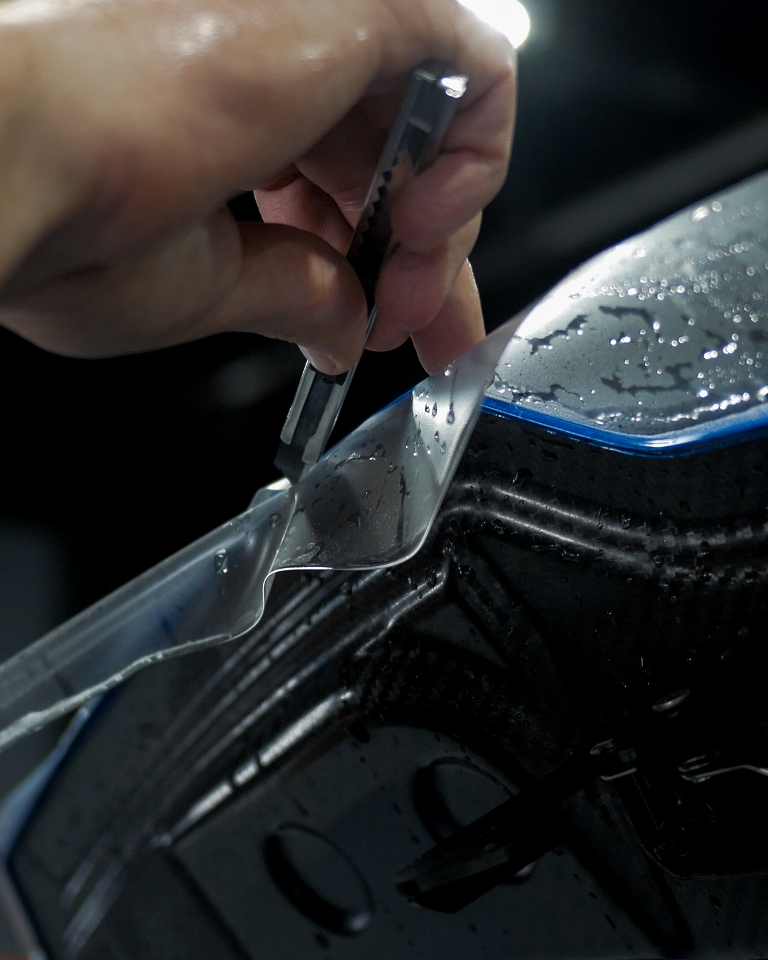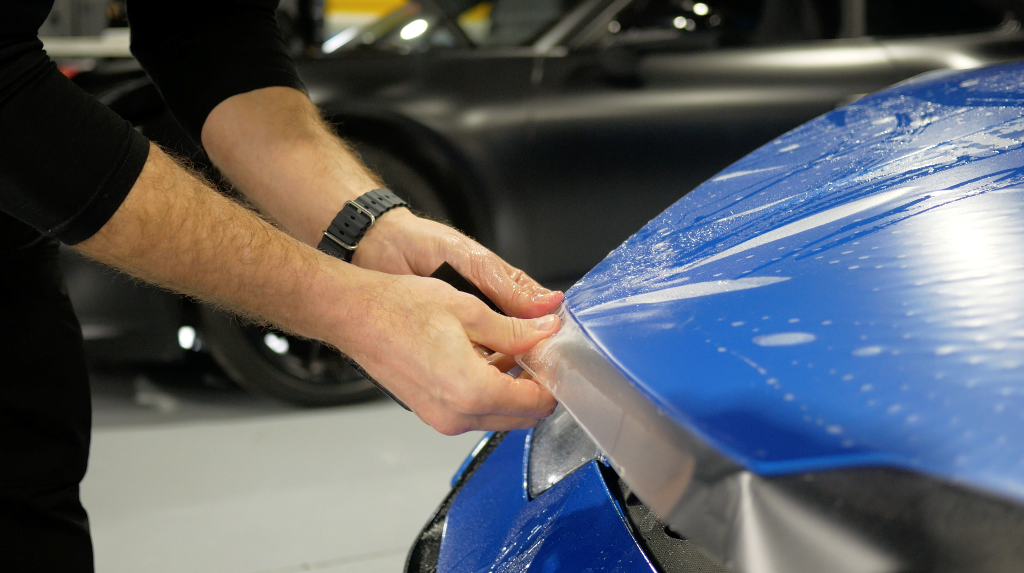As car enthusiasts and meticulous vehicle owners, we understand the lengths you go to protect and maintain the beauty of your ride. Especially in urban areas like Toronto, where road debris and unpredictable weather can wreak havoc on your car’s exterior, keeping your vehicle pristine can be a daunting challenge. That’s where the dynamic duo of Paint Protection Film (PPF) and ceramic coatings come into play.
Imagine this: a transparent shield that wards off scratches, chips, and stains, combined with a liquid polymer that adds a glossy, water-repellent surface. Together, they form an unbeatable defence system for your car’s paint. In this blog post, we’ll delve into the effects of ceramic coating on PPF, exploring how this powerful combination can elevate your vehicle’s protection and aesthetic appeal. So, buckle up as we take you through the enhanced security, durability, and stunning appearance that await your cherished vehicle.
Definition and Purpose of PPF
Now, let’s delve into the basics. What is PPF? PPF, or Paint Protection Film, is a transparent film made of thermoplastic urethane. The role it plays is significant. It’s applied to a car’s exterior to safeguard the paint from potential damage. Scratches, chips, stains, and contaminants, PPF has got you covered. PPF could be your car’s protector, especially in bustling urban environments like Toronto. Picture this: road debris flying, harsh weather conditions looming, and amidst it all, your car emerges unscathed. Now, that’s the power of PPF.
Composition and Types of PPF Available
PPF is a composite of various layers. Let’s break it down:
- Clear Coat Layer – Ensures a high-gloss finish while providing resistance to minor abrasions.
- Polyurethane Layer – Adds durability and impact resistance.
- Adhesive Layer – A layer that’s pivotal for securing the film to the vehicle’s surface without damaging the paint.
- Different types of PPF cater to different needs. Self-healing films repair minor scratches with heat, matte finishes add a unique flair, and high-gloss films max out the shine.
Common Applications of PPF on Vehicles
- Full Car Wraps: PPF can be used for full car wraps, providing comprehensive protection.
- Partial Wraps: High-impact areas like the front bumper, hood, and side mirrors can benefit from partial wraps.
- Door edges and handle cups: These areas are prone to scratches from keys and rings.
- Rear fenders and rocker panels: These areas are made safeguarded from road debris and gravel.
Impact of Ceramic Coating on PPF
Applying a ceramic coating on PPF can significantly enhance its protective properties and aesthetic appeal.

How Ceramic Coating Enhances the Protective Properties of PPF
Now we’re entering the realm of ceramic coating over PPF. It’s a game-changer. A ceramic coating creates a hard, hydrophobic surface repelling water, dirt, and other contaminants. Combine this with PPF and what you have is an impenetrable barrier against environmental damage. The ceramic coat on top of PPF makes the protective properties even more effective. It’s a robust barrier that adds a layer of invulnerability. Can you ceramic coat PPF? Absolutely, and the result is extraordinary protection.
Chemical and Physical Interactions Between Ceramic Coating and PPF
The chemistry between a ceramic coat and PPF is exceptional. The ceramic coating bonds with the PPF, forming a seamless protective layer. This enhances the film’s resistance to:
- Chemicals
- Bird droppings
- Tree sap
- Other harsh substances
What’s more? This bond makes the surface easier to clean and maintain.
Changes in Appearance and Durability
Adding a ceramic coating on top of PPF impacts the car’s appearance and the film’s durability. The ceramic coat enhances the gloss and clarity of PPF, making your vehicle look newer and shinier. Furthermore, it enhances the film’s durability, helping it withstand the elements and extend its lifespan.
Advantages of Applying Ceramic Coating on PPF
Increased Resistance to Chemicals and Contaminants
Ceramic coatings provide an extra layer of resistance against acidic contaminants, such as bird droppings and bug splatter, which can damage the PPF and the underlying paint. This increased resistance helps maintain the car’s appearance over time.

Enhanced UV Protection and Color Stability
Both PPF and ceramic coatings offer UV protection, but together, they provide superior defence against the sun’s harmful rays. This helps prevent fading and discoloration, keeping your car’s paint vibrant and glossy.
Improved Gloss and Hydrophobic Properties
The hydrophobic nature of ceramic coatings causes water to bead up and roll off the surface, taking dirt and grime with it. This not only makes cleaning your car easier but also maintains a high-gloss finish that enhances the vehicle’s aesthetic appeal.
Extended Lifespan of PPF
By applying a ceramic coat on top of PPF, you can significantly extend the life of the film. The added protection helps the PPF resist wear and tear, meaning you won’t have to replace it as often.
Premium Car Protection from ID Protection
We’ve explored the notion of ceramic coat on PPF, now it’s time for action. At ID Protection, we specialize in providing top-tier car protection services in Toronto. Aiming to keep your car in pristine condition, our expert team is skilled in applying both PPF and ceramic coatings. We use only the highest quality materials and techniques to deliver results that exceed your expectations. With ceramic coat and PPF combined, you get unparalleled protection and a stunning, glossy finish. Your car deserves the best, so why not give it the best? Contact us today to learn more about how we can help protect your investment.
